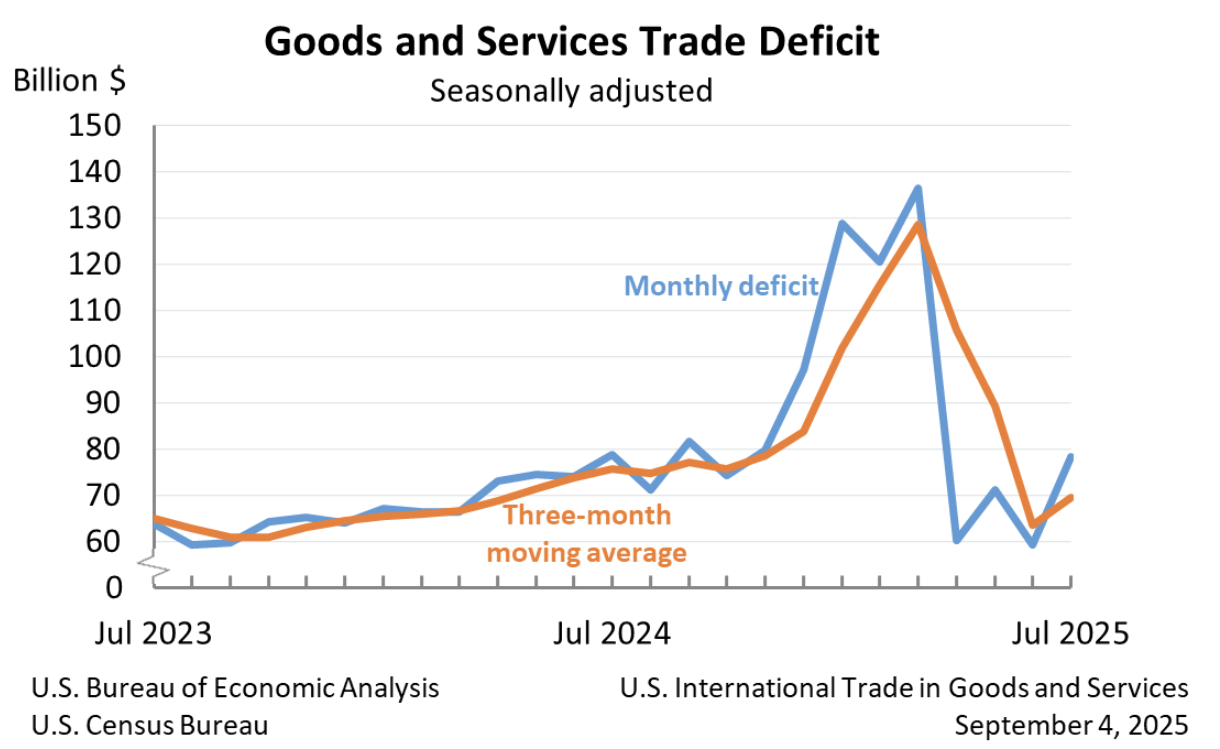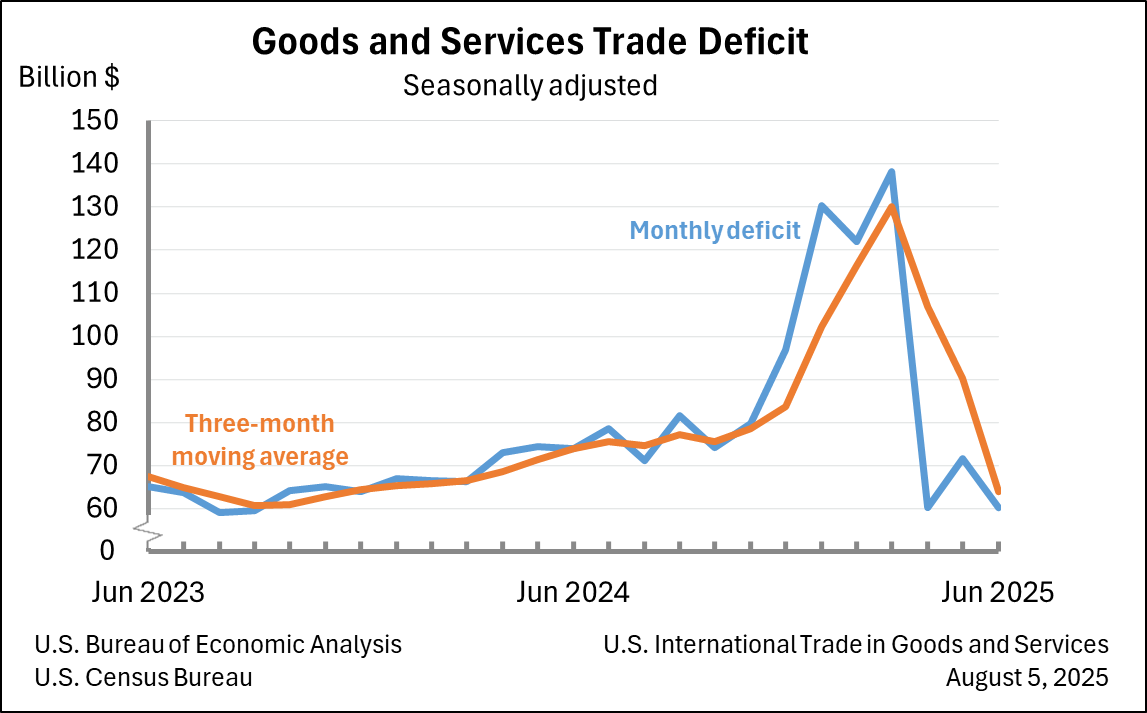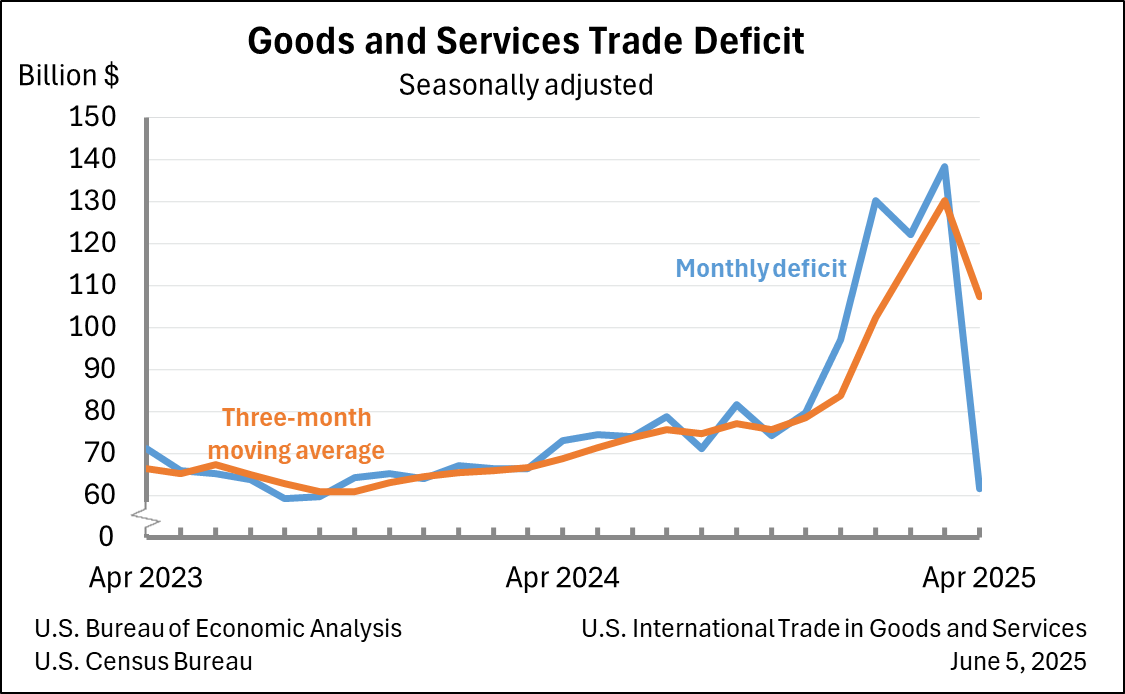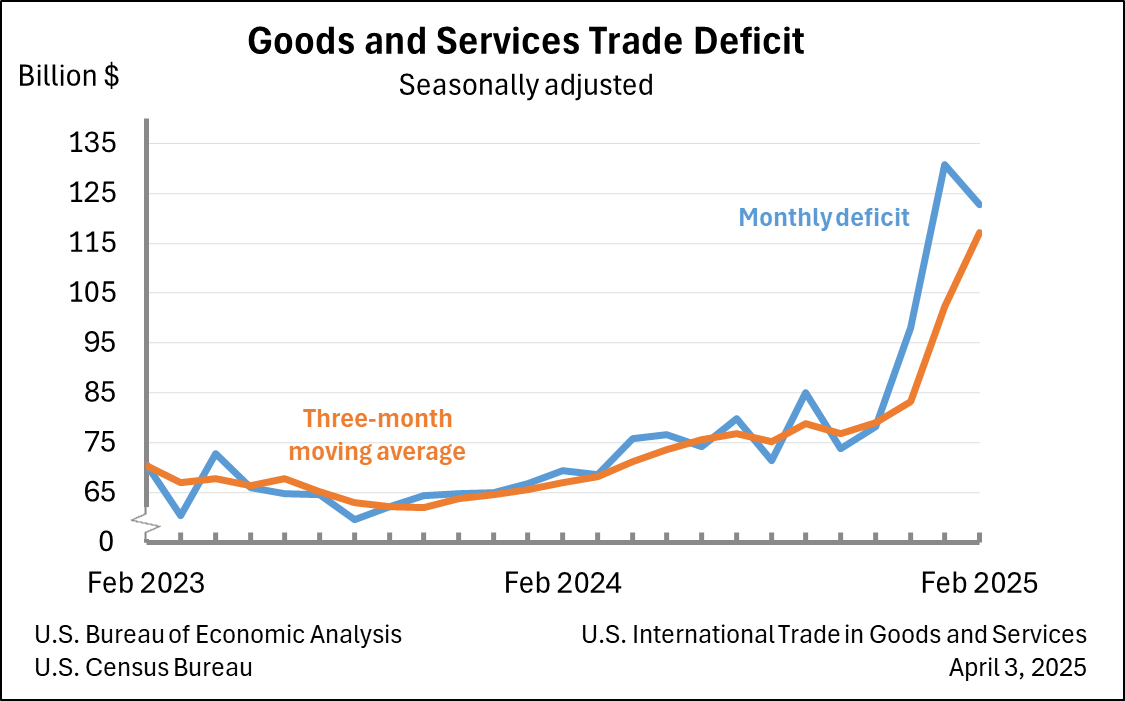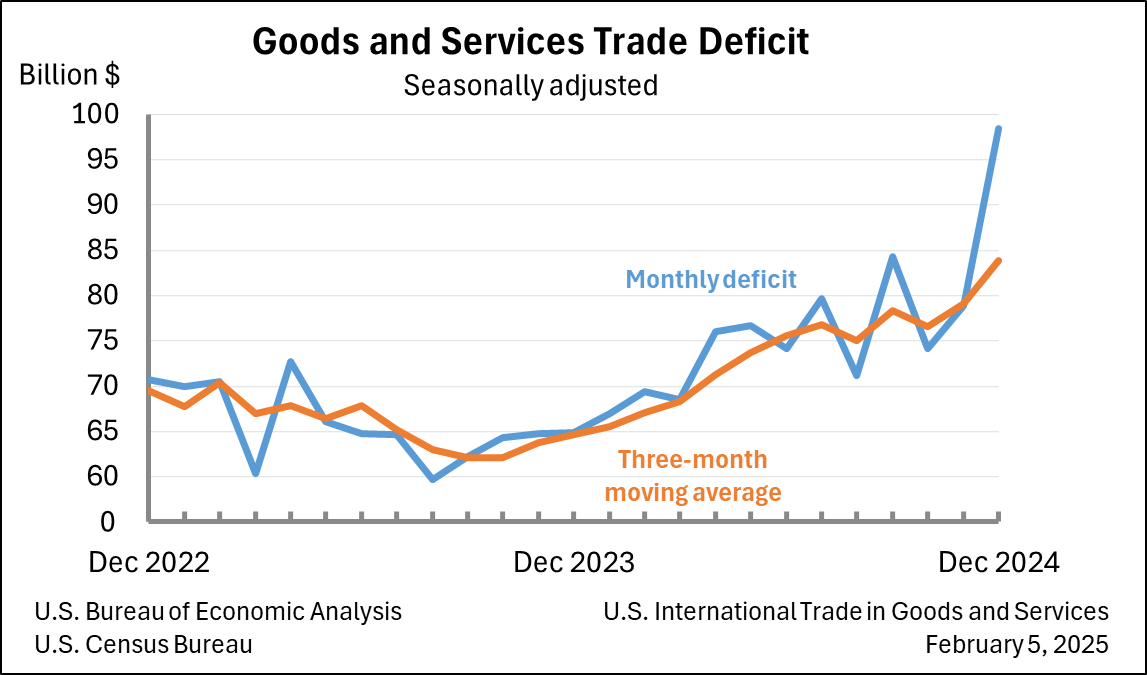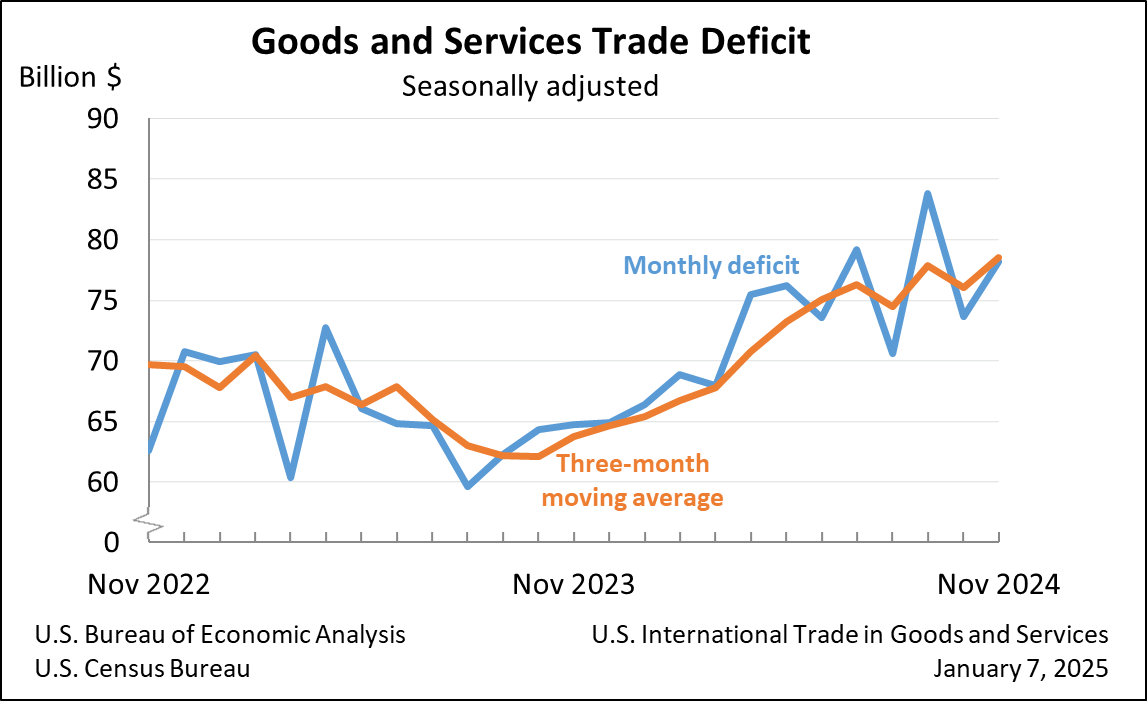The trade deficit reached another record high in March as the surge in imports continued into the end of the first quarter. At the same time, export growth was slower and offered no offset to the large increase in incoming goods. This widening gap in trade reflects not only the front-loading of goods ahead of new tariffs, but also growing uncertainty around global trade relations, particularly with key partners in Europe and Asia, as firms brace for potential disruptions.
Trade Deficit
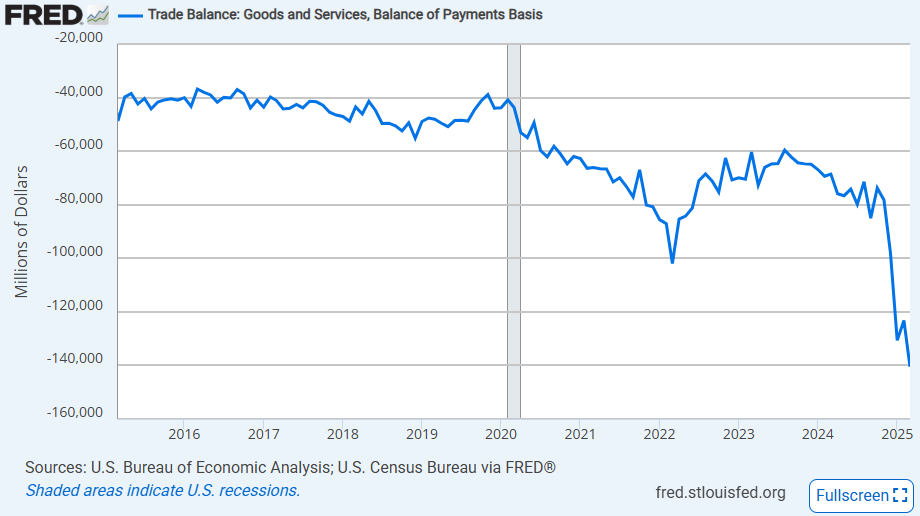
The BEA reported the March 2025 trade deficit at $140.5 billion in March, an increase of 14.0% MoM and the largest monthly deficit on record. This included an increase of 11.2% MoM in the goods trade deficit which reached $163.5 billion, slightly above the estimate from the Census Bureau’s advance economic indicators report of $162.0 billion (and that advance estimate was well above the $146.0 billion consensus forecast). The surge in the deficit in the beginning of Q1 was largely expected as the tariffs on China, Canada, and Mexico were announced in February, but the March surge has been a bit of a surprise and was a major factor in Q1 GDP surprising to the downside.
Imports

The deficit reached another record high due to another sizeable increase in imports in March. The 4.4% MoM increase in total imports was another strong gain after the surge of around 10% in January. Goods imports alone saw a stronger increase of 5.4% MoM and that led to many records: most capital goods imports ever at $93.1 billion, most consumer goods imports ever at $103.2 billion, and, more generally, most non-petroleum imports ever at $326.6 billion.

This surge was likely more fueled by the expectations of the broader reciprocal tariffs that were announced in early April. Thus, we see that imports surged to record highs for a number of the largest European economies: the UK, Ireland, the Netherlands, Belgium, France, Germany, and Italy. There were also record-high imports from India and Vietnam, two countries that typically benefit from US-China trade tensions that were hit with “Liberation Day” tariffs. Because the harshest tariffs that were in place were against China, there was a notable drop in imports from China in March, totaling $29.4 billion, the lowest since March 2020.
Exports
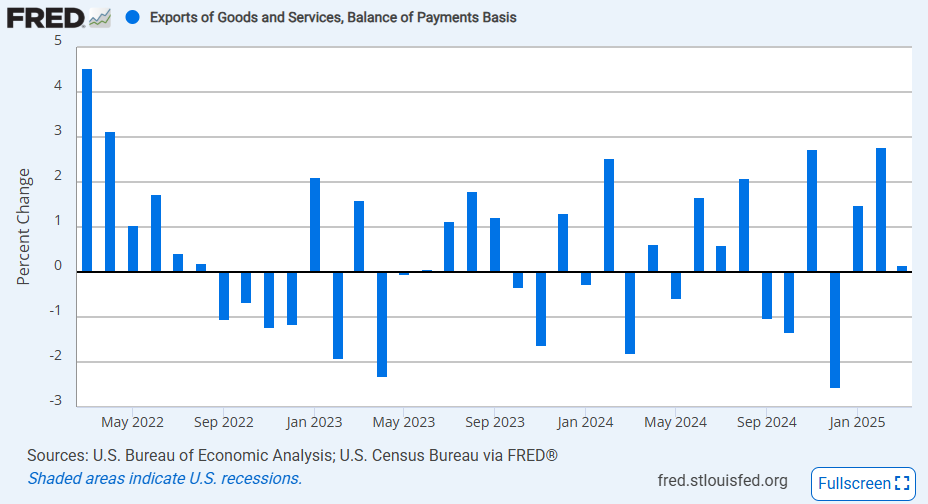
Another factor that played into the surge in the deficit was a rather limp increase in exports in March. In the last month of Q1, US exports abroad increased just 0.2% MoM, with goods exports up just 0.7% MoM. While the increase was small, the total value of exports in March was still strong because of the jump of 4.8% MoM in February. Thus, we still have that March goods exports were the highest since July 2022, and non-petroleum exports were the highest on record. In fact, energy prices falling in March likely played a part in lowering the total value of petroleum exports and impacting the deficit.
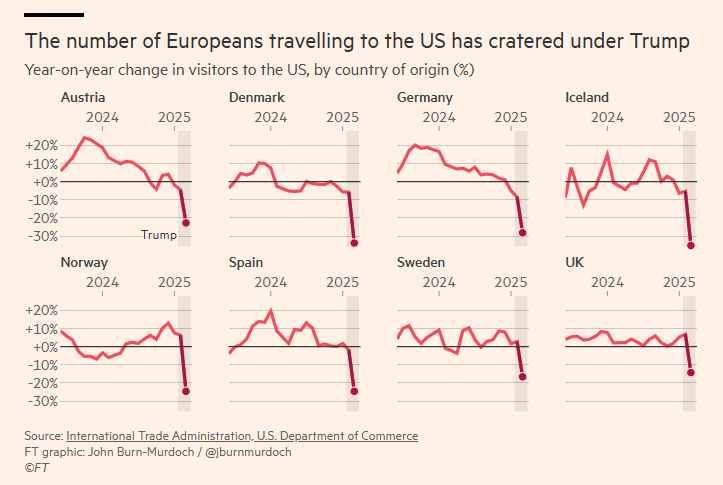
Another data point that has started to creep into the trade discourse is the US exports of travel services. The Financial Times has highlighted a significant decline in the number of Europeans travelling to the US, and that actually factors into the deficit calculation. In March specifically, there was a -7.1% MoM drop in travel services exports to just below $17 billion which is the lowest since November 2023. In the broader trade picture, the -$1.3 billion drop played only a minor role in increasing the deficit, but it does outline a new trend that is arising from weakness in US tourism.
Based on the totality of the report, it appears that the surprise in trade data likely came from an unexpected front-loading of imports from the EU, and in general, an increase in several of the deficits with EU economies. This suggests that firms are highly uncertain about the outcome of an EU-US trade deal, especially one that involves very low or no tariffs. The front-running is similar to what we saw in response to the China and North America tariffs, even though those trade restrictions were harsher.
Additionally, we might be seeing the start of a decoupling of US and EU business relations as evidenced by the decline in travel services and the weaker increase in US exports to the EU compared to the large increase in the flow of goods in the reverse direction. The two entities are set to enter trade negotiations, but the EU has started with a threat of tariffs on €100 billion of US goods if the talks fail.
 US International Trade
US International Trade


